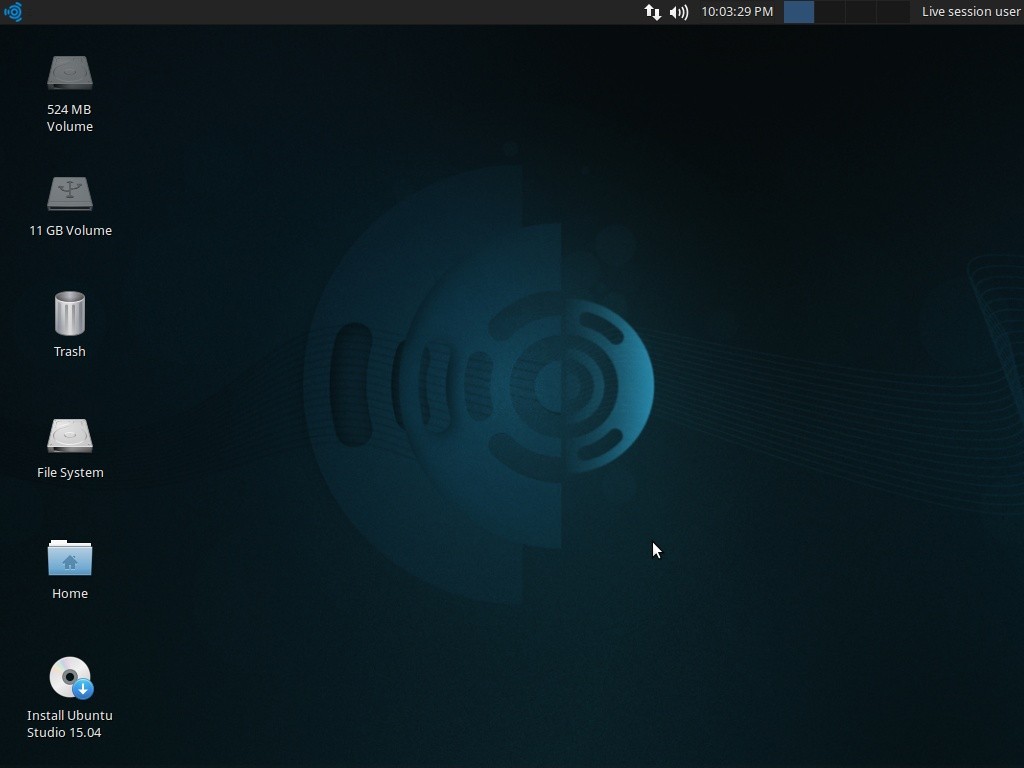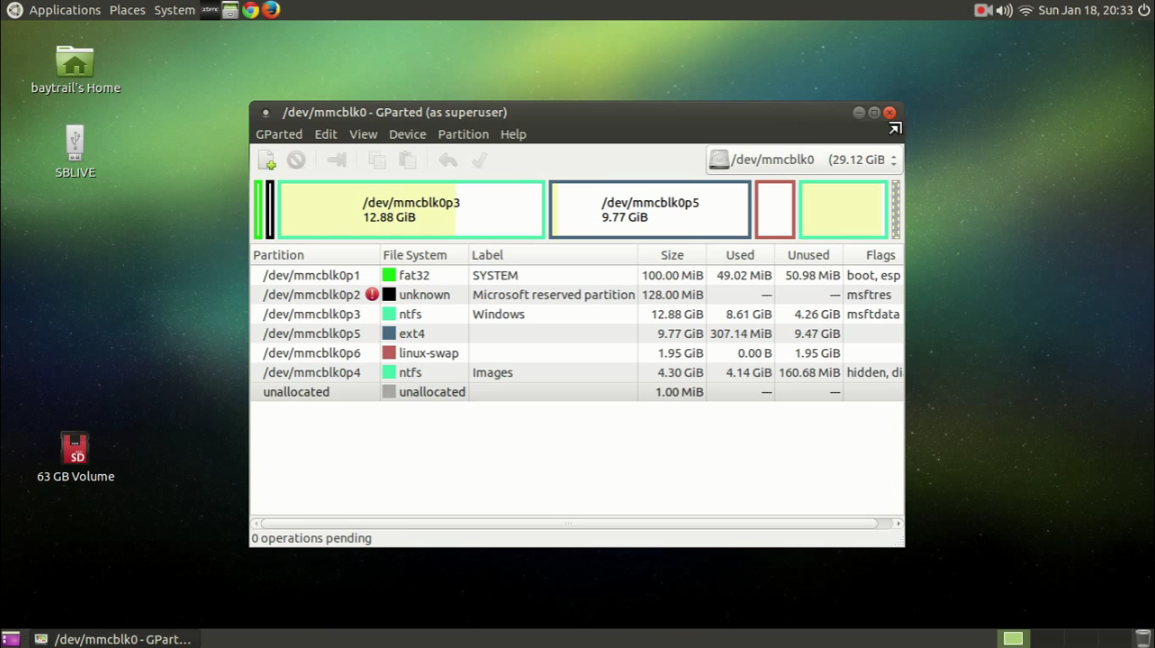Ubuntu 19 10 Iso
Oct 21, 2019 Ubuntu 19.10 is released. Here are the Ubuntu 19.10 features and where to download Ubuntu 19.10 ISO – Linux Ubuntu 19.10 ISO download. Users can upgrade to Ubuntu 19.10 from Terminal. Ubuntu 19.10 Features. But with Ubuntu 19.10, the proprietary Nvidia drivers are already included on the Ubuntu ISO, so enabling this will now install the Nvidia drivers even if you don't have access to the Internet during the installation process. Ubuntu 19.10 also ships with improved startup reliability when the. There is no upgrade path for Ubuntu through the ISO. The options you have are. Overwrite the current OS. Add the new OS on an empty partition. Next: there is no Ubuntu 18 or Ubuntu 19. It is Ubuntu 18.04 and Ubuntu 19.10. 19.04 has gone end of life on 23rd January 2020 so there is currently no official upgrade path to 19.10.
And again the weekend, and again nothing to do — why not try to work in the new Ubuntu 19.10? Looking ahead, I want to say that I was pleased with my optimization, but wildly upset by the issues with installing the Nvidia drivers. But anyway, this problem has been solved — because the Internet is full of good Linux users and typical problems.
The Ubuntu team have announced the release of Ubuntu 19.10. The new version features the GNOME 3.34 desktop environment, kernel 5.3 with new video card and single board computer hardware support, and new security options enabled in the package builds. 'Ubuntu 19.10 is based on the Linux release series 5.3. The Ubuntu team have announced the release of Ubuntu 19.10. The new version features the GNOME 3.34 desktop environment, kernel 5.3 with new video card and single board computer hardware support, and new security options enabled in the package builds. 'Ubuntu 19.10 is based on the Linux release series 5.3.
Perhaps this is the only thing that can cause rejection. Otherwise, the system is good. But let’s install it! In this article we will discuss how to install Ubuntu step by step 19.10.
Get Ubuntu Download Ubuntu
System requirements Ubuntu 19.10
According to the official documentation, system requirements for Ubuntu desktop are the following:
- Processor: dual core 2 GHz;
- RAM: 4 GB;
- Disk space: 25 GB or an external drive of the same size;
- Monitor resolution of 1024×768;
- DVD or USB flash drive to write the installation image;
- The Internet connection is not necessary but desirable.
Preparing to install
Step 1. Downloading the image

Click on this link http://releases.ubuntu.com/19.10/ and downloading the image. We need a Desktop image:
Step 2. Writing the image to a USB flash drive
As usual, if you have Linux, then download Unebootin; if you have Windows, then download Rufus. The links are provided.
Step 3. BIOS setup
Restart the PC and go into BIOS. We need to go to the tab Boot and specify in item 1st Boot Device your USB.
If you have UEFI, press immediately after a reboot, F8 or F10, and then we get to the boot menu and BIOS settings without. Here you can choose your install image and will load without BIOS setup.
Installing Ubuntu 19.10

Step 4. Language selection
Now we can install ubuntu 19.10. Here is the menu you will be welcomed after booting from the installation image:
Among other available languages, choose Russian. This is optional, but better Russian than, say, Swahili. You can even to put the English, but this is the most convenient.
Step 5. The keyboard layout
Choose the right for you. I chose Russian. Once selected click Continue.
Step 6. Updates and other programs
Note all the checkboxes. If you choose minimal installation, then after installation is complete, the software will remove all additional software. But we should not forget that this is not a typical build with torrents, and the official product. Can
not afraid that there will be anything remotely resembling the debris.
Step 7. Disk layout
This menu system offers you several mounting options. In one of them the hard drive completely clean (even from other systems). In any case the developer took care of us and pointed out all the necessary information by using footnotes, the Note and the Warning.
We choose Another option. Thus we will divide the hard disk as it is necessary for us.
Step 8. Partition table
If your hard disk is empty, you first need to create the partition table. Click on the New table topics, and here we get the warning:
Click on Continue and go further.
As you can see we had space. Now it is necessary to distribute. To system requires 3 sections:
- the /boot partition for the boot loader;
- / section for the system;
- the /home partition for user files.
Step 9. The /boot partition (the boot loader)
Alternately, let’s create the partitions. We direct the cursor on the Free space,
we click and click on the sign plus. As this loader, I recommend to install
a minimum of 500 MB. This is the best option.
Mountpoint must specify as /boot, we do loader do. And what about file system, I can say that ext4 you do not need, so better to choose the most simple ext2.
Cached
Step 10. Partition for system
Again we perform the manipulation from the past of the item and create another partition — system. It’s the operating system. It is better to choose the filesystem ext4, and mount point to specify /. Size at least 10 GB, but rather in the region of 40 GB, then you have enough space for programs.
Download Ubuntu Desktop Download Ubuntu
Step 11. Home section
All the remaining space, we give a favorite — into the category of user. File
system choose ext4 and mount point write /home.
Step 12. The completion of the sections
In the end I have it looks that way:
When you make sure that all the sections indicated exactly as it should, then click on Install now.
To confirm, click on Continue.
Step 13. Time zone
Select your time zone:
Step 14. Create user
Everything is simple, specify the user name and other parameters. Since I love to risk, then put a check in Login automatically. This means that the system will not ask
password at startup and anyone can get into it.
Step 15. Installation complete
We have to wait until the installation is complete Ubuntu 19.10:
Wait 15-20 minutes. At the end appears this message:
You need to reboot the device and retrieve the media on which the system is in.
Step 16. The initial launch
Rebooted and here we see a loading screen. Beautiful, minimalistic:
After a few moments I am greeted by Desk:
Here you can immediately login to the desired account.
Step 17. Privacy settings
I don’t want to help to improve something, because I like this result. But seriously, I’m the guy who uses AdBlock while browsing YouTube, thus save yourself from the essential garbage. Here as well, but you may think differently.
Step 18. Application Manager
Here you can select the desired application from app center and install them for
use. Very cool stuff, and even VLC on the first page!
Step 20. Updates
In the end I was waiting for a notification about the update. I recommend not to forget to update the system
so click on Install now and wait for when they downloaded the update.
Insights
In my opinion, installing Ubuntu 19.10 very simple, don’t you think? And Yes, in General it is better not to hurry with the installation of the OS immediately after the release, and to wait until the developers will fix possible bugs, and even better to wait for the LTS version of Ubuntu 20.04.
The Ubuntu Studio team is pleased to announce the release of Ubuntu Studio 19.10, code-named “Eoan Ermine”. This marks Ubuntu Studio’s 26th release. This release is a regular release and as such, it is supported for 9 months.
For those requiring longer-term support, we encourage you to install Ubuntu Studio 18.04 “Bionic Beaver” and add the Ubuntu Studio Backports PPA, which will keep 18.04 supported through April 2021.
Since it’s just out, you may experience some issues, so you might want to wait a bit before upgrading. Please see the release notes for a complete list of changes and known issues.
New This Release
OBS Studio
OBS Studiois now included by default, making Ubuntu Studio the first-ever operating system ready for live streaming and video recording out-of-the-box.
We realize that OBS Studio 24 has already been released, however we only include version 23 since by the time version 24 was released, the deadlines for inclusion in the Ubuntu repositories had already passed. As such, if you require a newer version, the OBS Project does have a PPA. If you choose to add this PPA, please note that neither the Ubuntu Studio nor any other Ubuntu team can support it.
Additional Audio Plugins
Adding nearly 100 audio plugins to Ubuntu Studio, we now include plugins from the Linux Studio Plugins project and the Distrho Plugins Framework. You will find these plugins in LADSPA, LV2, and VST formats.
RaySession
To replace the abandoned LADI Session Handler, we opted to adopt RaySession, a Qt-based audio application session handler API-compatible with Non Session Manager. This already supports a large number of applications that are already installed by default, and, per user feedback, provides superior session handling than the old LADI tools when paired with Carla.
New Ubuntu Studio Controls
Ubuntu Studio Controls version 1.11.3 is included in this release, and provides numerous improvements:
- Now includes an indicator to show whether or not Jack is running
- Added Jack backend selections: Firewire, ALSA, or Dummy (used for testing configurations)
- Added multiple PulseAudio bridges
- Added convenient buttons for starting other configuration tools
Other Changes
Ufraw has been removed from the repositories as development ceased in 2015, and it is incompatible with the current version of Gimp. For those affected, we suggest you find a new workflow for working with RAW images. Applications we suggest include RawTherapee and DarkTable.
Want to help out?
Ubuntu Studio is maintained by a very small team and we are actively seeking new contributors. We are looking for developers, packagers and testers. Even if you are interested in contributing outside these areas, please do not hesitate to reach out. Your contribution is precious regardless of your field of activity. We are open to volunteers with all expertise levels. Just head over to our contribute page to find out how to get started.
Found a bug?
Taking the time to report bugs makes a huge difference; it’s the first step towards improvement! Clear and specific bug reports is the best way to get attention to a problem that needs fixing. The easiest way to create a bug report is with the terminal.
Open one up and type: ubuntu-bug <package>
Read more about this at https://help.ubuntu.com/community/ReportingBugs
Special Thanks for This Release
- Erich Eickmeyer: Project Leader, Communications, Ubuntu Studio Installer contributions, Social Media, Packaging, Documentation, Artwork, Vision
- Len Ovens: Ubuntu Studio Controls, Ubuntu Studio Installer, Coding
- Brian Hechinger: Ubuntu Studio Controls contributions and testing
- Thomas Ward: Packaging, Ubuntu Core Developer for Ubuntu Studio, Code Cleanup
- Ross Gammon: Upstream Debian Developer, Guidance, Sage Wisdom
- Our many testers and help along the way